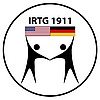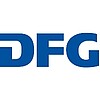B3 (2018 - 2021) - Immunomodulatory role of cell-derived particles in sepsis and Leishmania infection
Cell-derived particles such as exosomes, microparticles and apopototic blebs have emerged as important mediators of intercellular communication. In addition, intracellular cytosolic content when released into the extracellular space can modulate activities of surrounding cells. To test whether cytosolic components have immunomodulatory capacities, we generated membrane-free Protein-Nucleic-Acid-Complexes (PNACs) from mouse fibroblasts cultured in complete or nutrient-deprived media and identified the main proteins contained in PNACs. A preferential accumulation of annexin V (ANXA5) in PNACs prepared from nutrient-deprived media was found. To test functional effects of PNACs an in vitro assay with peritoneal macrophages was established that showed that especially ANXA5 containing PNACS were ingested from macrophages. Injection of PNACs during Leishmania major (L. major) infection revealed significantly more regulatory CD69+ CD4+ and CD8+ T cells and follicular T helper cells but only when PNACs were prepared from nutrient-deprived cells. In collaboration with the Caldwell lab, we found that ANXA5+ PNACs were secreted into the peritoneum of mice after induction of sepsis. Additional treatment with PNACs did not impart additional mortality in this non-lethal mouse model. Importantly, ANXA5+ PNACs treatment accelerated early neutrophil recruitment and enhanced bacterial clearance. The Caldwell lab has significant expertise in neutrophil derived microparticles (NDMP) demonstrating that during sepsis: 1) phosphatidyl serine (PS) expressing NDMPs accumulate at the infection site, 2) worsen survival, 3) are ingested by F4/80 macrophages in a Tim-4 / MFG-E8 dependent manner, and 4) suppress the inflammatory response. NDMPs (200-600 nm) and PNACs (100 and 200 nm) overlap in size but differ in their molecular composition. Whereas PNACs contain ANXA5 and lack a lipid layer, NDMPs are encased in a lipid. Our collaborative preliminary data show that when neutrophils are incubated with PNACs, NDMP accumulation is decreased. Here, we aim to investigate the effect of cytosolic membrane-free components and cell derived membrane-containing microparticles during L. major infection and sepsis.
Aims:
1. To definethe active components of PNACs (ANXA5) and NDMPs (PS) that modulate the function of target leukocytes
2. Delineate the different and/or mutual effects of PNACs and of NDMPs by which they modulate the immune response to L. major and systemic infection
3. Determine the mechanism(s) underlying PNAC-mediated suppression of NDMP formation from neutrophils
Principal Investigators


Students




